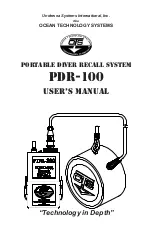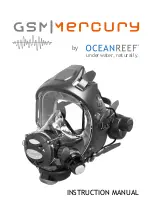
15
Technical data are subject to change without notice.
ISO 9001 certified. © Copyright SPM 1996-9. 71519.Z
SPM Instrument AB
• Box 4 • S-645 21 Strängnäs • Sweden
Tel +46 152 22500 • Fax +46 152 15075 • [email protected] • www.spminstrument.se
Definition of Machine Classes According to ISO 2372
The following text is a quotation from ISO 2372 (1974, E, page 6, Annex A). This ISO Recommendation has also
been published as British Standard (BS 4675, part I). A similar vibration classification of industrial machinery can
be found in VDI 2056.
In order to show how the recommended method of
classification may be applied, examples of specific
classes of machines are given below. It should be em-
phasized, however, that they are simply examples
and it is recognized that other classifications are pos-
sible and may be substituted in accordance with the
circum-stances concerned. As and when circumstances
permit, recommendations for acceptable levels of vi-
bration severity for particular types of machines will
be prepared. At present, experience suggests that
the following classes are appropriate for most appli-
cations.
Class I
Individual parts of engines and machines, integrally
connected with the complete machine in its normal
operating condition. (Production electrical motors of
up to 15 kW are typical examples of machines in this
category.)
Class II
Medium-sized machines, (typically electrical motors
with 15 to 75 kW output) without special foundations,
rigidly mounted engines or machines (up to 300 kW)
on special foundations.
Class III
Large prime movers and other large machines with
rotating masses on rigid and heavy foundations which
are relatively stiff in the direction of vibration measu-
rement.
Class IV
Large prime movers and other large machines with
rotating masses on foundations which are relatively
soft in the direction of vibration measurement (for
example turbogenerator sets, especially those with
lightweight substructures).
Class V
Machines and mechanical drive systems with unbal-
anceable inertia effects (due to reciprocating parts),
mounted on foundations which are relatively stiff in
the direction of vibration measurement.
Class VI
Machines and mechanical drive systems with unbal-
anceable inertia effects (due to reciprocating parts),
mounted on foundations which are relatively soft in
the direction of vibration measurements; machines
with rotating slackcoupled masses such as beater
shafts in grinding mills; machines, like centrifugal ma-
chines, with varying unbalances capable of operating
as selfcontained units without connecting components;
vibrating screens, dynamic fatigue-testing machines
and vibration exciters used in processing plants.



































